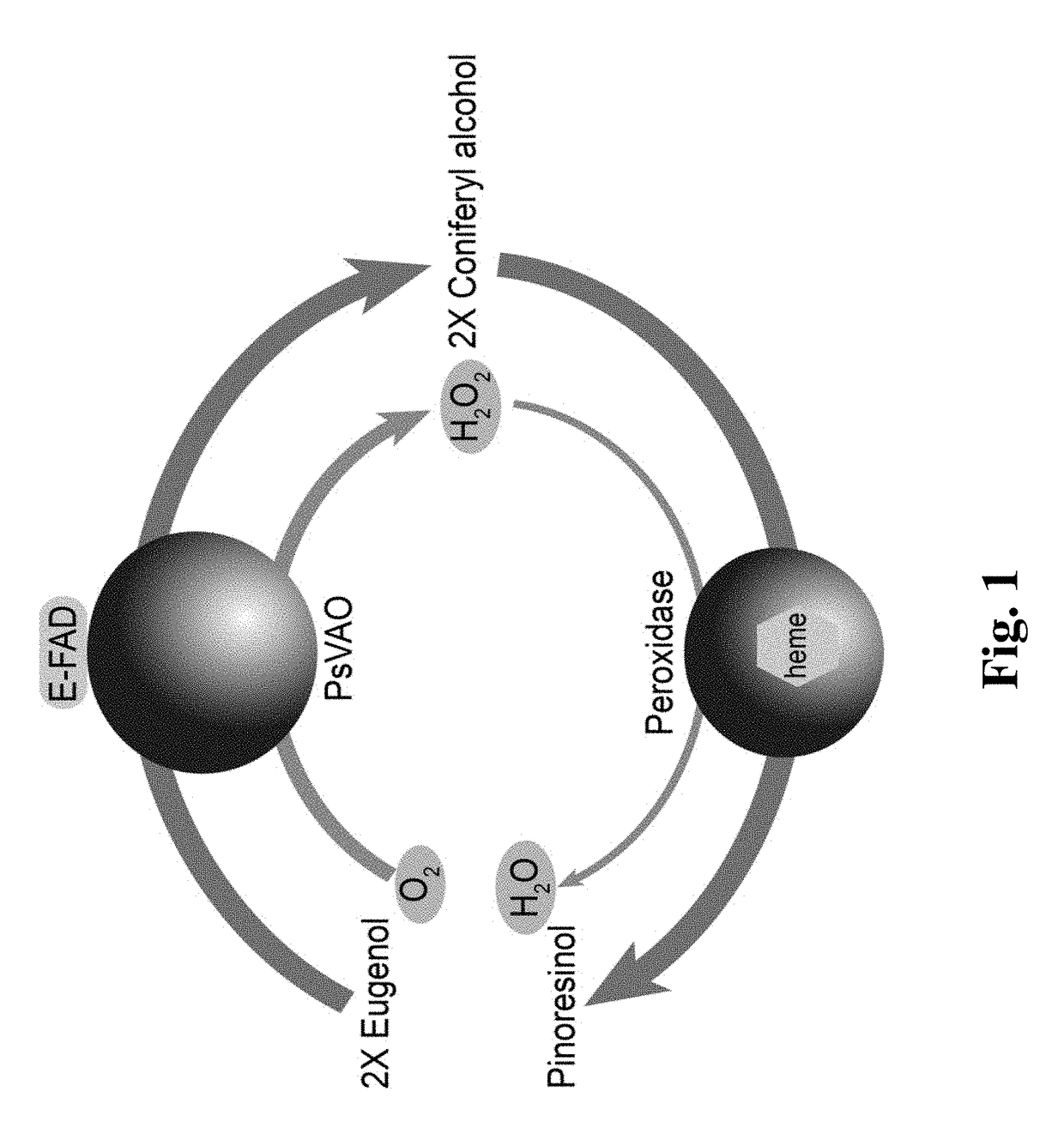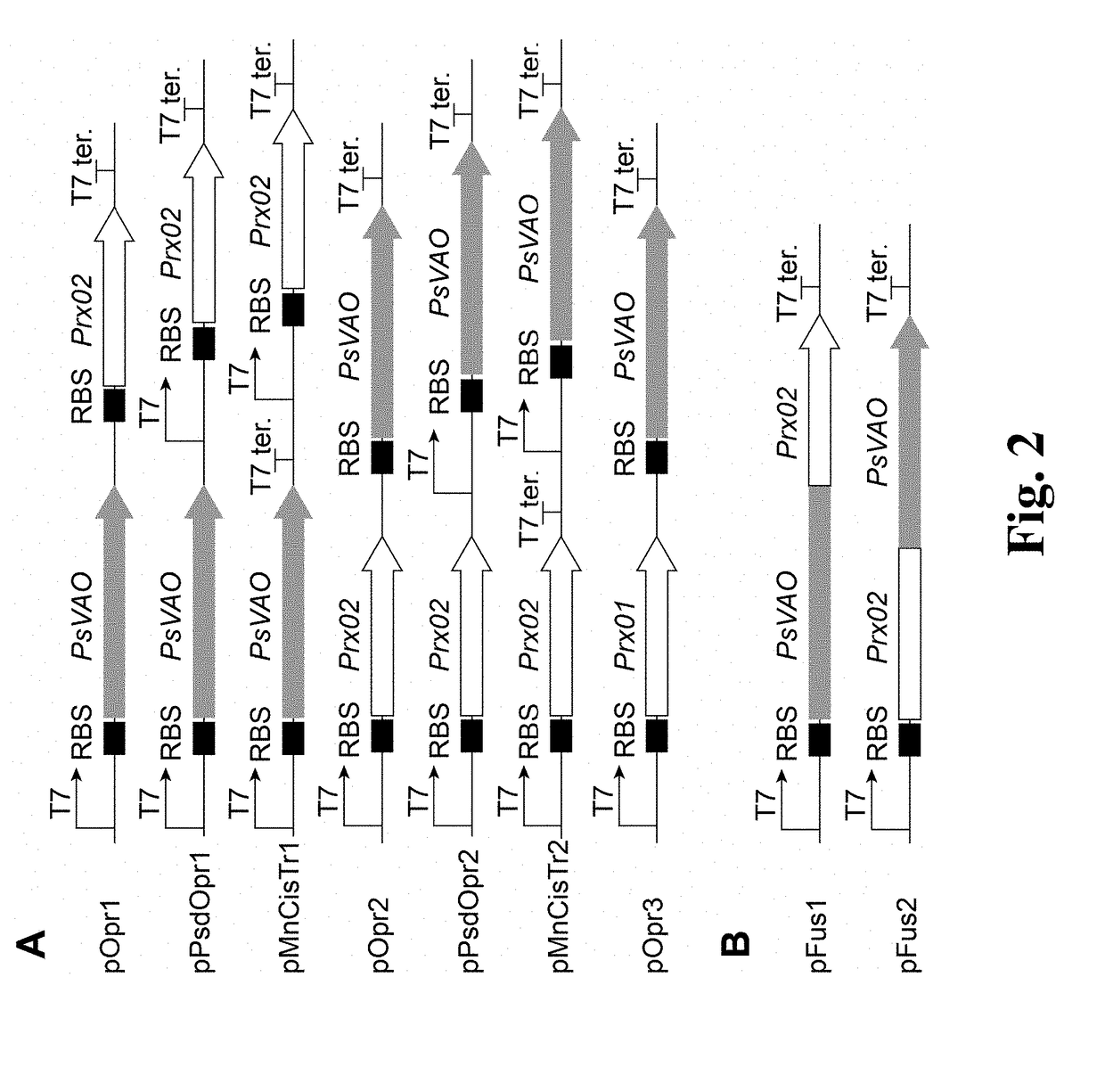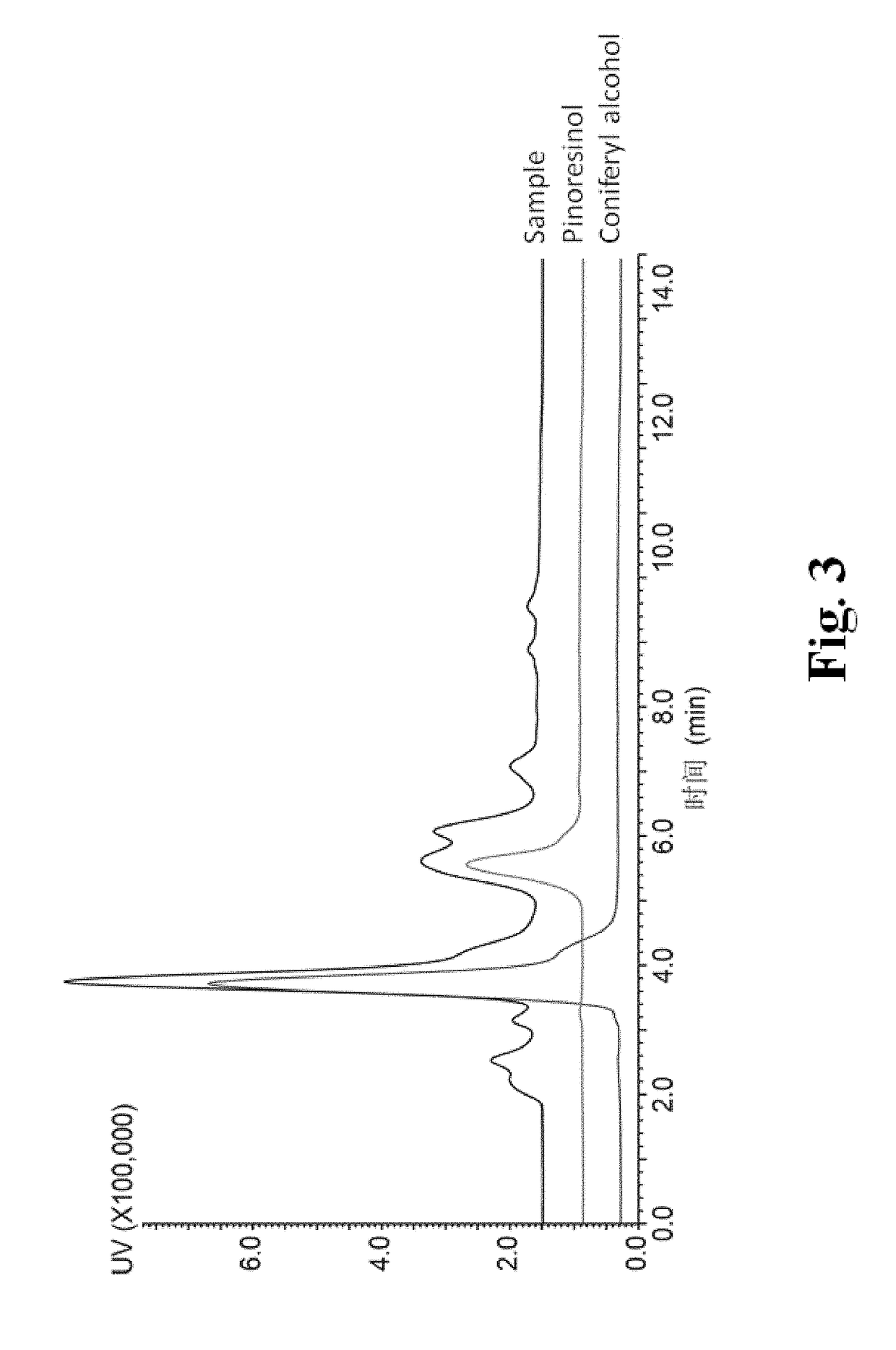Method for High-efficiency Production of Pinoresinol Using an H2O2 Auto-scavenging Cascade
a production method and technology of pinoresinol, applied in the field of biological and chemical engineering, can solve the problems of difficult chemical synthesis of pinoresinol, low efficiency and low yield, and mainly isolated pinoresinol
- Summary
- Abstract
- Description
- Claims
- Application Information
AI Technical Summary
Benefits of technology
Problems solved by technology
Method used
Image
Examples
example 1
ion of Recombinant Strains Harboring Different Genetic Architectures
[0047](I) Construction of PsVAO and Prx02 Co-Expressing Strains
[0048]The peroxidase gene Prx02 was amplified from the genome DNA of E. coli BL21 (DE3) with primer pair SEQ ID NO:16 / SEQ ID NO:17. The PCR product was separated with agarose gel. A 0.9 kb fragment was purified and subcloned into pMD 19 T Simple vector. The sequence was verified by Sanger sequencing. The nucleic acid sequence of Prx02 and coding amino acid sequence was SEQ ID NO:4 and SEQ ID NO:3. The verified Prx02 was subcloned into a ePathBrick vector pET-28a(PB) by Bam HI / Hind III resulting in recombinant plasmid pET-Prx02.
[0049]Th Penicillium simplicissimum vanillyl alcohol oxidase gene PsVAO was optimized, synthesized, and subcloned into pUC57-Simple by GenScript corporation (Nanjing, China). The amino acid sequence and optimized nucleic acid sequence was SEQ ID NO:1 and SEQ ID NO:2 respectively. PsVAO was subcloned into a ePathBrick vector pET-28a...
example 2
of Pinoresinol Production Using Different Enzymatic Cascades
[0053]The recombinant strains were precultured in LB medium containing 50 mg / L kanamycin at 37° C., 220 rpm overnight. The strains were inoculated into 25 mL TB medium in 250 mL shaking flasks with an amount of 1% (v / v). A final concentration of 50μg / mL kanamycin was added for the maintenance of plasmid. After incubation at 37° C., 220 rpm for 2 hr, the cultures were precooled at 25° C., 220 rpm for 30 min A final concentration of 500 μM IPTG was added for the induction of protein expression. The strains were cultured at 25° C., 220 rpm for an additional 10 hr. Cells were harvested by centrifugation at 5000 rpm, 4° C. for 5 min, washed with 50 mM PBS (pH7.0) and re-suspended in 50 mM PBS (pH7.0). The concentration of the cell was adjusted to OD600=18±1, and 0.5% (v / v) eugenol was added as the substrate. The reaction was carried out in 250 mL shaking flask at 25° C., 220 rpm for 6 hr.
[0054]The expression of the enzymes was a...
example 4
ion and Scale-Up of the Bioconversion
[0059]The optimal pH and temperature can differ widely among enzymes, and these factors were optimized to balance the flux from eugenol to pinoresinol. The results showed that the optimal pH was 7.0 (FIG. 10A). Temperature was found to be an essential factor for pinoresinol production, as shown in FIG. 10B. The pinoresinol titer decreased slightly when the temperature was increased from 20° C. to 30° C., but it decreased dramatically when the temperature was increased to 37° C., from 2.85 g / L to 0.36 g / L, and the accumulation of coniferyl alcohol increased from 2.05 g / L to 2.93 g / L. This indicated that higher temperatures inhibited the activity of Prx02 but not PsVAO. Because the first step of the cascade is an O2 consuming reaction, dissolved O2 is a key factor. The results (FIG. 10C) showed that the pinoresinol titer decreased with increasing rotation rate (i.e. aeration), whereas the accumulation of coniferyl alcohol increased with increasing ...
PUM
| Property | Measurement | Unit |
|---|---|---|
| pH | aaaaa | aaaaa |
| concentration | aaaaa | aaaaa |
| pH | aaaaa | aaaaa |
Abstract
Description
Claims
Application Information
 Login to View More
Login to View More - R&D
- Intellectual Property
- Life Sciences
- Materials
- Tech Scout
- Unparalleled Data Quality
- Higher Quality Content
- 60% Fewer Hallucinations
Browse by: Latest US Patents, China's latest patents, Technical Efficacy Thesaurus, Application Domain, Technology Topic, Popular Technical Reports.
© 2025 PatSnap. All rights reserved.Legal|Privacy policy|Modern Slavery Act Transparency Statement|Sitemap|About US| Contact US: help@patsnap.com



